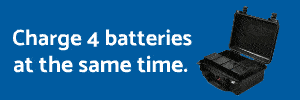- Joined
- May 26, 2018
- Messages
- 50
- Reaction score
- 13
- Location
- Birmingham, Alabama, USA
- Website
- digitalphotocreations.co
FAA Launches 2023 Holiday “12 Days of Drones” Safety Campaign
WASHINGTON – If you are considering a drone as a holiday gift, the Federal Aviation Administration (FAA) wants you and your loved ones to understand how to fly it safely.
The FAA is launching its 12 Days of Drones campaign to educate people about the rules, regulations and best practices of operating a drone. This December, the agency will share important drone-safety information and resources that will help future pilots stay up to date with the latest rules. All of the campaign’s safety messages will be posted on the FAA’s DroneZone Twitter and Facebook accounts throughout the month.
The campaign will run each weekday from December 7 – 22 with each day dedicated to a specific drone safety topic.
The FAA also released a new video reminding everyone of the rules and regulations that drone pilots must follow.
Additional information about safely flying a drone is available on the FAA website.
WASHINGTON – If you are considering a drone as a holiday gift, the Federal Aviation Administration (FAA) wants you and your loved ones to understand how to fly it safely.
The FAA is launching its 12 Days of Drones campaign to educate people about the rules, regulations and best practices of operating a drone. This December, the agency will share important drone-safety information and resources that will help future pilots stay up to date with the latest rules. All of the campaign’s safety messages will be posted on the FAA’s DroneZone Twitter and Facebook accounts throughout the month.
The campaign will run each weekday from December 7 – 22 with each day dedicated to a specific drone safety topic.
- Day 1 (12/7): The Recreational UAS Safety Test (TRUST)
- Day 2 (12/8): Register and mark your drone
- Day 3 (12/11): Remote ID
- Day 4 (12/12): Become a certificated remote pilot
- Day 5 (12/13): Where can I fly
- Day 6 (12/14): Airspace authorizations -- LAANC
- Day 7 (12/15): “Weather” or not to fly
- Day 8 (12/18): Flying at night
- Day 9 (12/19): Drones for everyone
- Day 10 (12/20): Flying over people
- Day 11 (12/21): Drones and careers
- Day 12 (12/22): Drones for good
The FAA also released a new video reminding everyone of the rules and regulations that drone pilots must follow.
Additional information about safely flying a drone is available on the FAA website.



